Last Updated on October 28, 2024 by Ellen
It probably costs a whole lot less than you might guess to retire in Chiang Mai, Thailand. We were pleasantly surprised at its super-affordability.
My wife posted this 4-year summary of our travel expenses in retirement. The $125K total included EVERYTHING we’ve spent during our slow travel — usually staying a month in each location — as we wandered through 19 countries on 4 continents over that time.
To get an accurate average monthly cost figure for our travel expenditures, a $10K deduction was made for a one-time, major surgery and the remaining $115K total divided by 48 months.
The result: $2,395 average per month.
But 10 months in Europe and 4 total months in the US skewed the result somewhat. So what does it ‘really cost’ to comfortably live for a month in a far-away, developing country?
Below is an accounting of a recent 30-day period we spent in Chiang Mai, Thailand.
- $473 Housing (Airbnb one-bedroom apartment)
- $439 Restaurant/take-out food & drink
- $126 Groceries
- $60 Tourist visas (2 persons / 2-months prorated)
- $47 Entertainment/Excursions
- $45 used bicycle purchase
- $28 Gifts & Charity
- $25 Misc. supplies
- $14 Local travel (city bus & Uber/Grab)
$1,257 = 30 day total for 2 people
There aren’t many places in the U.S. where a couple can live for under $1,300 a month. This might be why there is a huge expat community of people who decided to retire in Chiang Mai.
Chiang Mai is the largest city in Northern Thailand, a provincial and cultural capital with a metro population of nearly 1 million people. It has an historic, ‘walled’ city center, over 300 ornate Buddhist temples and many universities and hospitals.
There is good weather and plenty of visitors, but Chiang Mai is NOT a vacation destination with the beaches, excitement, and development of southern Thailand.
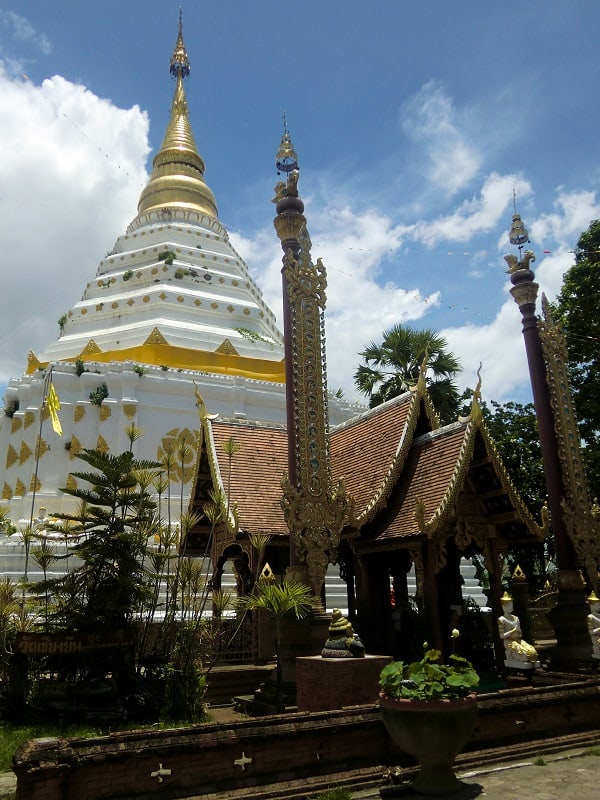

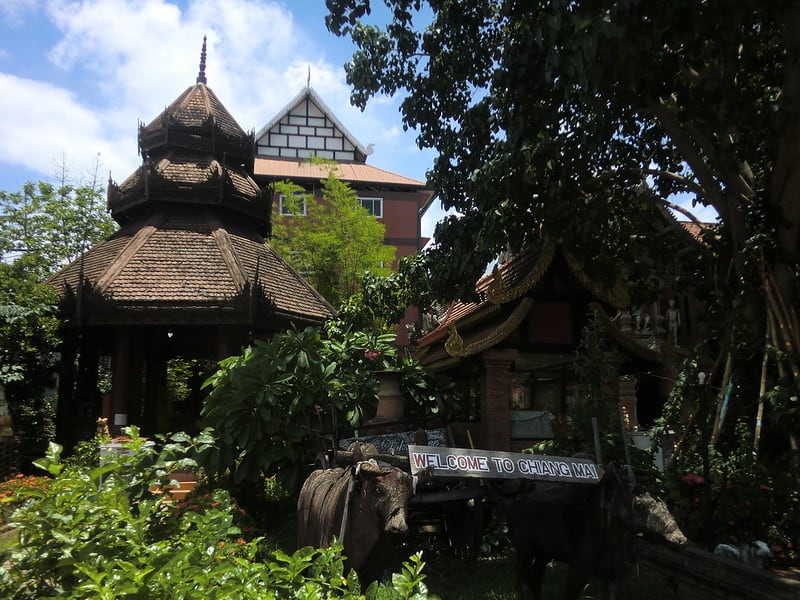
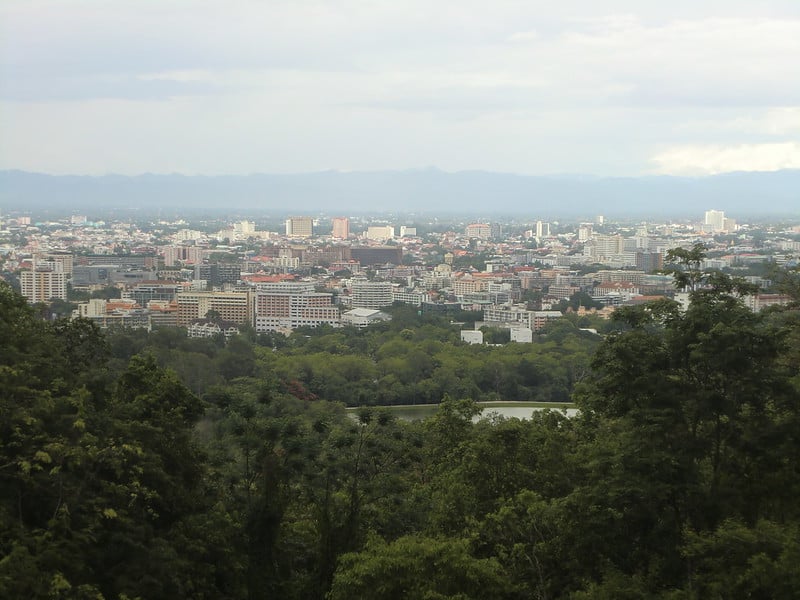
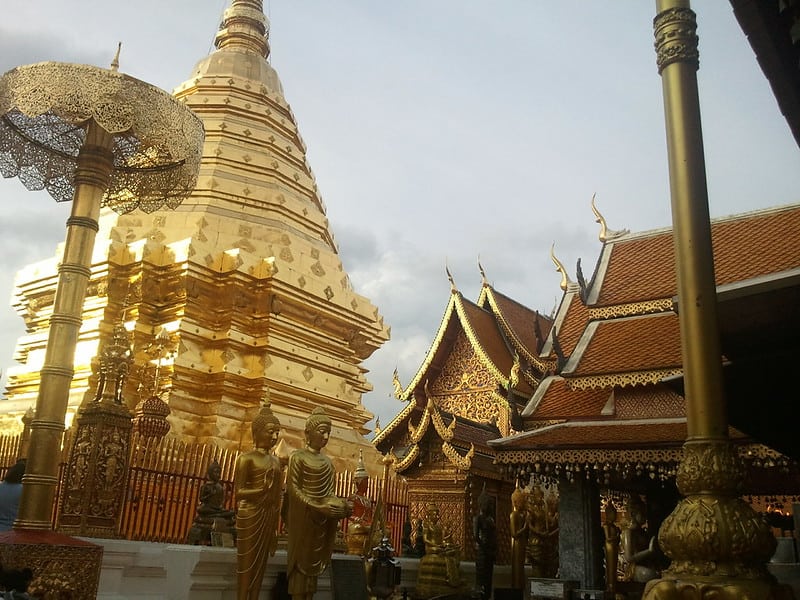
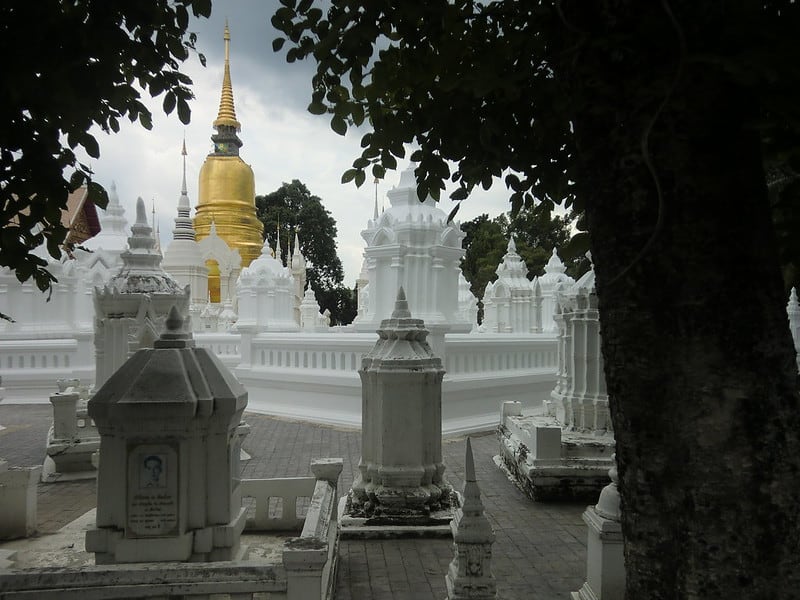
Afraid of health care overseas? Don’t be!
Our special guide on global health care shows you:
- 7 easy steps to find the right doctors and hospitals
- Specific price examples for various medical services
- What to know about medical visas
- And more!
We go without travel health insurance, but many of the principles apply to those with coverage.
While in Chiang Mai, we stayed in a nice, fully furnished, 550 sq. foot, 1-bedroom, Airbnb apartment. (Editor’s note, October 4, 2022: this post had a link to the unit, but the owner has taken it off Airbnb, so the link was removed.)
We did a lot of reading, creative writing, bicycle riding, temple visiting (always free), photographing, hanging out at cafes, hiking around the nearby mountains, waterfalls and huge modern malls, and eating cheap, spicy, authentic Thai street food… mmmmmmm.
Throughout the month we did everything we felt like doing and made no extraordinary effort at containing costs.
Full disclosure: we stayed in Chiang Mai for 6 weeks. We specifically came from Vietnam for health care services – and we did spend over $500 on doctor visits & tests, long-term prescription refills, and cosmetic treatments just prior to this 30-day snapshot.
We also paid about $50 per person for airfare to and from Chiang Mai.
And finally, unlike some of my other monthly cost breakdowns, I omitted all expenses associated with our rental income property back in the US.
This time, I really wanted to highlight daily living expenses in an enjoyable, lower-tourist, less developed, modern Asian environment, for any readers who might be hoping to retire in Chiang Mai.
Thanks for reading, “What it cost to retire in Chiang Mai.”
See our other monthly slow travel budget breakdowns.
Related:
- Post-cancer check up in Chiang Mai, Thailand
- The best elephant camp to visit in Pai, Thailand
- Bangkok water boats – demystified
(Editor’s note: This is an independent blog. We get nothing in return for any recommendations or reviews. We are retired — we do not work for anyone!)
EARTH VAGABONDS NEWSLETTER
.
.
.
🙂

Looks alot cheaper than living in Canada.